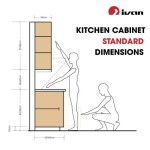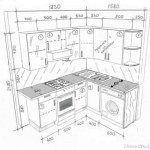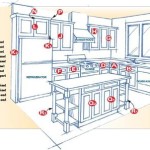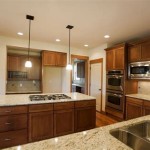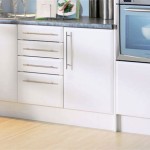```html
Kitchen Cabinet Moldings: Enhancing Aesthetics and Functionality
Kitchen cabinet moldings are decorative or functional strips of material used to accent and finish cabinetry. These moldings are crucial elements in defining the overall style and aesthetic of a kitchen, adding character, detail, and visual interest. Beyond their decorative purpose, kitchen cabinet moldings can also serve practical functions, such as concealing gaps, protecting edges, and facilitating transitions between different surfaces.
The selection of appropriate kitchen cabinet moldings requires careful consideration of several factors, including the kitchen's architectural style, the existing cabinetry design, the desired level of formality, and the homeowner's personal preferences. A wide range of molding styles, materials, and finishes are available, allowing for extensive customization and ensuring a cohesive and visually appealing result.
Moldings can be categorized based on their location within the kitchen and their primary function. Crown moldings typically adorn the tops of wall cabinets, while base moldings run along the bottom of base cabinets. Other types of moldings, such as light rail moldings, toe kicks, and decorative onlays, contribute to the overall design and functionality of the cabinetry.
Understanding Common Types of Kitchen Cabinet Moldings
Numerous types of moldings are available, each offering a unique aesthetic and serving a specific purpose. Familiarizing oneself with these different types is essential for making informed decisions during the kitchen design or renovation process.
Crown Molding: Crown molding is perhaps the most recognizable type of kitchen cabinet molding. Installed at the top of wall cabinets, it creates a visual bridge between the cabinets and the ceiling, adding height and elegance to the space. Crown molding comes in a variety of profiles, ranging from simple and understated to ornate and elaborate. Popular styles include cove, ogee, and stepped crown molding. The choice of crown molding profile should complement the overall style of the kitchen, with simpler profiles often favored in contemporary settings and more elaborate profiles used in traditional kitchens.
Base Molding: Base molding runs along the bottom of base cabinets, concealing the gap between the cabinets and the floor. It provides a finished look and protects the cabinets from damage caused by moisture or impacts. Base molding typically consists of a baseboard, a shoe molding, and sometimes a cap molding. The baseboard is the main component, while the shoe molding fills the gap between the baseboard and the floor. The cap molding, if used, adds a decorative touch to the top of the baseboard.
Light Rail Molding: Light rail molding is installed on the underside of wall cabinets, concealing under-cabinet lighting fixtures and preventing glare. It also adds a decorative element to the cabinets, providing a finished look. Light rail molding is available in various profiles and finishes, allowing it to blend seamlessly with the cabinetry. The chosen profile and finish should complement the style of the cabinets and the overall kitchen design.
Toe Kick: A toe kick is a recessed space at the bottom of base cabinets that allows for comfortable standing while working at the countertop. It provides room for the feet and prevents the user from bumping into the cabinets. Toe kicks are typically covered with a molding that matches the cabinetry, creating a seamless and visually appealing design. The toe kick molding is often made from durable materials that can withstand wear and tear.
Decorative Onlays and Appliqués: Decorative onlays and appliqués are ornamental additions that can be applied to cabinet doors, drawer fronts, or other surfaces. These decorative elements add detail and character to the cabinetry, enhancing its visual appeal. Onlays and appliqués are available in a wide range of styles, from traditional floral motifs to contemporary geometric designs. They can be made from wood, resin, or other materials and can be painted or stained to match the cabinetry.
Panel Moldings: Panel moldings are used to create a raised panel effect on cabinet doors and drawer fronts. They add depth and dimension to the cabinetry, enhancing its visual interest. Panel moldings are typically made from wood and are available in various profiles. They are often used in traditional kitchen designs to create a classic and elegant look.
Material Considerations for Kitchen Cabinet Moldings
The choice of material for kitchen cabinet moldings is an important factor that affects their durability, appearance, and cost. Common materials include wood, MDF (Medium Density Fiberboard), and PVC (Polyvinyl Chloride). Each material has its own advantages and disadvantages, and the best choice depends on the specific application and the homeowner's preferences.
Wood: Wood is a classic and popular choice for kitchen cabinet moldings. It offers a natural beauty and warmth that is difficult to replicate with other materials. Wood moldings can be stained or painted to match the cabinetry, and they can be easily shaped and carved to create intricate designs. However, wood is more susceptible to moisture damage and warping than other materials, and it can be more expensive.
MDF (Medium Density Fiberboard): MDF is a composite material made from wood fibers and resin. It is less expensive than solid wood and is more resistant to warping and cracking. MDF moldings are often used for painted cabinetry because they provide a smooth and consistent surface. However, MDF is more susceptible to moisture damage than solid wood, and it does not have the same natural beauty.
PVC (Polyvinyl Chloride): PVC is a synthetic material that is highly resistant to moisture, insects, and rot. PVC moldings are a good choice for kitchens that are prone to moisture or where durability is a primary concern. They are also relatively inexpensive and easy to install. However, PVC moldings do not have the same natural beauty as wood, and they may not be suitable for all kitchen styles.
The selection of material depends heavily on the budget, the aesthetic goals, and the expected environmental conditions within the kitchen. A careful assessment of these factors is necessary to ensure the long-term performance and visual appeal of the moldings.
Installation Techniques and Best Practices
Proper installation is critical to achieving a professional and long-lasting result with kitchen cabinet moldings. The installation process typically involves measuring, cutting, and attaching the moldings to the cabinets using nails, screws, or adhesive. Attention to detail and precision are essential for ensuring a seamless and visually appealing finish.
Measuring and Cutting: Accurate measuring and cutting are crucial for achieving a tight and seamless fit. Use a measuring tape and a miter saw to cut the moldings to the correct length and angle. For complex installations, such as crown molding, it is helpful to create a template or a mock-up to ensure that the cuts are accurate. Always double-check the measurements before cutting to avoid costly mistakes.
Attaching Moldings: Moldings can be attached to cabinets using nails, screws, or adhesive. Nails are a quick and easy option for attaching lightweight moldings, while screws provide a more secure and durable connection for heavier moldings. Adhesive can be used to attach moldings to surfaces that are difficult to nail or screw into. Choose the appropriate attachment method based on the weight and type of molding being installed.
Finishing Touches: After the moldings are installed, it is important to fill any nail holes or gaps with wood filler and sand them smooth. Then, apply a coat of primer and paint or stain the moldings to match the cabinetry. Apply a bead of caulk along the edges of the moldings to seal any gaps and prevent moisture from entering. These finishing touches will create a professional and polished look.
Professional installation is recommended for complex molding projects or when specialized tools are required. An experienced installer can ensure that the moldings are properly installed and finished, resulting in a beautiful and long-lasting result. Furthermore, they can advise on the best molding choices for a given kitchen design scheme depending on budget and desired aesthetic.
By carefully selecting and installing kitchen cabinet moldings, homeowners can enhance the aesthetics and functionality of their kitchens, creating a space that is both beautiful and practical. The various molding types, materials, and installation techniques offer extensive customization options, allowing for a truly personalized and cohesive kitchen design. The durability and visual appeal added by moldings represent a significant contribution to overall kitchen value and aesthetics.
```
3 Ways To Enhance Your Kitchen With Crown Molding

11 Kitchen Cabinet Crown Molding Ideas For Your

10 Types Of Kitchen Cabinet Molding For Your Home

Adding Crown Molding To Kitchen Cabinets Young House Love

Decorative Molding Timberlake Cabinetry

Diy Kitchen Cabinet Upgrade With Paint And Crown Molding

Adding Moldings To Your Kitchen Cabinets Remodelando La Casa

9 Molding Types To Raise The Bar On Your Kitchen Cabinetry

7 Types Of Cabinet Moldings And How To Use Them Properly

Crown Molding For Shaker Kitchen Cabinets
Related Posts


